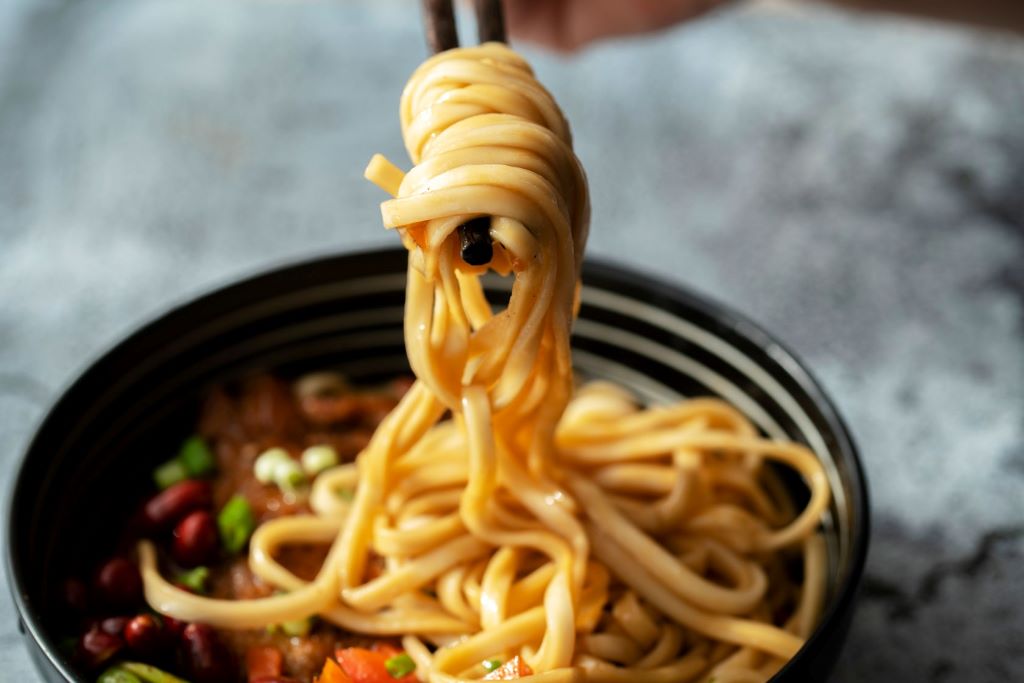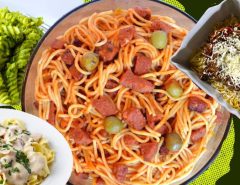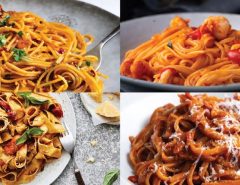Pasta connects cultures across continents through shared love of noodles. From Italian spaghetti to Japanese ramen, these beloved dishes tell stories of tradition and innovation. This global pasta tour explores iconic noodles that have shaped culinary landscapes worldwide. We’ll discover how different regions transformed simple ingredients into extraordinary comfort foods. Additionally, you’ll learn preparation techniques and cultural significance behind each variety. Therefore, join us on this delicious journey through the world’s most cherished noodle traditions.
Italian Pasta Heritage: Foundation of Global Noodle Culture
Italy remains the undisputed birthplace of pasta excellence. However, the country’s noodle varieties extend far beyond basic spaghetti. Each region proudly maintains unique pasta traditions passed down through generations.
Northern Italy specializes in egg-based pasta like fettuccine and tagliatelle. These golden ribbons pair perfectly with rich cream sauces and meat ragù. Meanwhile, southern regions favor durum wheat pasta such as orecchiette and cavatappi. Furthermore, these shapes hold chunky vegetables and bold tomato sauces beautifully.
According to the International Pasta Organisation, Italy produces over 3.2 million tons of pasta annually, representing 25% of global production. This massive output reflects the deep cultural connection Italians maintain with their noodle heritage.

Asian Noodle Traditions: Diversity Beyond Imagination
Asian countries developed incredibly diverse noodle cultures independent of Italian influence. Therefore, each nation created unique preparation methods and flavor profiles that define their cuisine today.
China pioneered hand-pulled noodles over 4,000 years ago. These techniques spread throughout Asia, creating regional specialties everywhere. Additionally, rice noodles became staples in Southeast Asian countries like Vietnam and Thailand. Meanwhile, buckwheat noodles found popularity in colder climates like Japan and Korea.
The variety seems endless across this vast continent. From thick udon to delicate vermicelli, Asian noodles showcase incredible creativity and adaptation to local ingredients.
Japanese Ramen: Artistry in Every Bowl
Japanese ramen represents the pinnacle of noodle soup craftsmanship. However, this beloved dish only gained popularity in Japan during the 20th century. Today, ramen shops are cultural institutions throughout the country.
Four main ramen styles dominate Japanese cuisine: shoyu, shio, miso, and tonkotsu. Each style requires different broth preparation techniques and specific noodle textures. Furthermore, regional variations add countless sub-categories to explore.
Master ramen chefs spend decades perfecting their craft. They understand how noodle alkalinity affects texture and how broth temperature influences flavor release. Therefore, every bowl represents years of dedication and skill development.
Chinese Hand-Pulled Noodles: Ancient Techniques Live On
Chinese hand-pulled noodles showcase remarkable culinary artistry that continues fascinating food lovers worldwide. Additionally, these techniques require years of practice to master properly.
Skilled noodle masters transform simple dough into hundreds of thin strands through rhythmic stretching motions. The process appears almost magical as thick dough becomes delicate noodles within minutes. Furthermore, different pulling techniques create various textures and thicknesses for specific dishes.
Lanzhou beef noodles represent the most famous hand-pulled noodle dish. This clear broth soup features perfectly chewy noodles alongside tender beef and fresh vegetables. Therefore, it demonstrates how technique and tradition create extraordinary everyday meals.
Thai Pad Thai: Street Food Success Story
Pad Thai transformed from humble street food into a global phenomenon representing Thai cuisine. However, this dish actually originated as part of a national identity campaign in the 1930s.
The perfect Pad Thai balances sweet, sour, and salty flavors through tamarind, palm sugar, and fish sauce. Additionally, rice noodles provide the ideal texture to absorb these complex flavors. Meanwhile, fresh ingredients like bean sprouts and lime add brightness and crunch.
Street vendors throughout Thailand maintain their own secret recipes passed down through families. Therefore, each Pad Thai experience offers subtle differences that keep the dish exciting and authentic.
Vietnamese Pho: Comfort in Every Spoonful
Vietnamese pho represents the ultimate comfort food that warms hearts across cultures. Additionally, this aromatic soup demonstrates how simple ingredients create extraordinary complexity.
Traditional pho requires patience as beef bones simmer for hours creating rich, clear broth. Spices like star anise, cinnamon, and cardamom add warmth and depth. Furthermore, fresh herbs and vegetables provide contrast and brightness to each bowl.
Northern and southern Vietnamese regions prepare pho differently, reflecting local preferences and available ingredients. However, both styles maintain the essential balance that makes pho universally beloved.
European Pasta Variations: Regional Specialties Worth Discovering
European countries beyond Italy developed their own beloved pasta traditions worth exploring. Therefore, these regional specialties offer unique flavors and preparation methods.
German spaetzle represents handmade pasta at its finest. These small dumplings pair beautifully with hearty meat dishes and rich gravies. Additionally, Hungarian cuisine features similar pasta called nokedli, often served with paprika-spiced stews.
Eastern European countries like Poland and Czech Republic created pierogi and knedlíky respectively. These filled pasta varieties showcase how different cultures adapted basic noodle concepts to local tastes and ingredients.
Health Benefits of Different Noodle Types Around the World
Different noodle varieties offer various nutritional benefits depending on their ingredients and preparation methods. However, choosing the right type can support healthy eating goals.
Whole grain pasta provides more fiber and nutrients than refined versions. Additionally, buckwheat noodles contain complete proteins and important minerals. Meanwhile, rice noodles offer gluten-free alternatives for people with dietary restrictions.
According to research published in the Journal of Nutrition, regular pasta consumption within Mediterranean dietary patterns associates with lower body weight and reduced cardiovascular disease risk. Furthermore, the study emphasized portion control and balanced meal composition as key factors.
Cooking Techniques That Transform Simple Ingredients into Masterpieces
Proper cooking techniques separate good noodles from extraordinary ones across all cultures. Therefore, understanding these methods helps home cooks achieve restaurant-quality results.
Italian pasta requires abundant salted water and precise timing to achieve perfect al dente texture. Additionally, reserving pasta water helps create silky sauce consistency. Meanwhile, Asian noodles often benefit from brief blanching followed by ice baths to maintain texture.
Stir-frying techniques common in Asian cuisine require high heat and quick movements. This method preserves vegetable crispness while developing complex flavors through controlled browning. Furthermore, proper wok seasoning contributes unique taste profiles impossible to replicate otherwise.
Cultural Significance: How Noodles Unite Communities Worldwide
Noodles transcend mere sustenance to become powerful symbols of cultural identity and community connection. Additionally, sharing noodle dishes strengthens social bonds across generations.
Italian families gather around tables sharing pasta dishes that connect them to ancestral traditions. Similarly, Asian cultures view noodle length as symbols of longevity and prosperity. Therefore, these foods carry deep emotional significance beyond their nutritional value.
Festival celebrations worldwide feature special noodle preparations that mark important occasions. These traditions pass cultural knowledge between generations while maintaining community cohesion through shared culinary experiences.
Modern Fusion: Innovation Meets Tradition in Contemporary Noodle Dishes
Contemporary chefs create exciting fusion dishes that honor traditional techniques while embracing modern creativity. However, successful fusion requires deep understanding of original cultural contexts.
Italian-Asian fusion produces dishes like ramen carbonara that combine Japanese broth techniques with Italian sauce traditions. Additionally, Mexican-Italian combinations create unique flavor profiles through spice integration. Meanwhile, American interpretations often emphasize convenience without sacrificing taste.
These innovations keep noodle culture vibrant and relevant for new generations. Furthermore, they demonstrate how food traditions evolve while maintaining their essential character and appeal.
Tips for Creating Authentic Noodle Experiences at Home
Creating authentic noodle dishes at home requires attention to detail and quality ingredients. Therefore, following these guidelines helps achieve professional results.
Key tips for success:
• Use proper cooking vessels sized appropriately for noodle quantities
• Maintain correct water-to-noodle ratios for optimal texture
• Season cooking water adequately to enhance flavor development
• Time cooking precisely to achieve desired texture consistency
• Prepare mise en place before beginning cooking processes
• Taste and adjust seasoning throughout preparation stages
Additionally, investing in quality ingredients makes significant differences in final results. Meanwhile, practicing basic techniques builds confidence for more complex preparations.

Common Mistakes to Avoid When Preparing International Noodles
Even experienced cooks make mistakes that compromise noodle dish quality. However, awareness of these pitfalls helps prevent disappointing results.
Frequent mistakes include: • Overcooking noodles past optimal texture points • Using insufficient cooking water for proper noodle movement • Adding oil to pasta water unnecessarily • Rinsing pasta after cooking when sauce adherence is desired • Ignoring sauce-to-noodle ratio balance requirements • Serving dishes at incorrect temperatures for optimal enjoyment
Furthermore, rushing preparation often leads to inferior results. Therefore, allowing adequate time for proper technique execution ensures success. Read Also: Perfect Pasta Salad Ideas: Delightful and Delicious
Personal Experience: My Journey Through Global Noodle Cultures
During my travels through Asia and Europe, I discovered how deeply noodles connect people to their heritage. In a small Tokyo ramen shop, I watched the master chef taste his broth dozens of times throughout the day. His dedication taught me that great noodles require patience and attention to detail.
Additionally, learning to make fresh pasta from an Italian grandmother in Tuscany revealed family secrets passed down through generations. She emphasized how touch and intuition guide proper dough consistency. Therefore, these experiences showed me that noodles represent living cultural traditions worth preserving and celebrating.
Conclusion
This global pasta tour reveals how noodles unite cultures through shared appreciation for comfort and craftsmanship. From Italian pasta heritage to Japanese ramen artistry, these dishes demonstrate human creativity and cultural connection. Additionally, understanding traditional techniques helps us appreciate the skill behind seemingly simple preparations. Related Topics: History of Pasta
Therefore, exploring world noodle varieties enriches our culinary knowledge while connecting us to diverse cultural traditions. Whether you prefer spicy Thai pad thai or comforting Vietnamese pho, remember that every bowl tells a story worth savoring.
Call to Action
Have you tried making authentic noodles from different cultures at home? Share your experiences and favorite recipes in the comments below. Additionally, don’t forget to share this article with fellow food enthusiasts who appreciate global culinary traditions.
Frequently Asked Questions
What makes Italian pasta different from other noodle varieties?
Italian pasta typically uses durum wheat semolina, creating a firm texture that holds sauces well. Additionally, traditional preparation methods and regional specialties reflect centuries of culinary refinement.
How long should different types of noodles be cooked?
Cooking times vary significantly by noodle type. Fresh pasta cooks in 2-4 minutes, while dried varieties need 8-12 minutes. Asian noodles range from 30 seconds for thin rice noodles to 8 minutes for thick udon.
Are rice noodles healthier than wheat-based pasta?
Rice noodles offer gluten-free alternatives and digest more easily for some people. However, wheat pasta often contains more protein and fiber. Therefore, the healthiest choice depends on individual dietary needs and preferences.
What’s the secret to perfect ramen broth?
Exceptional ramen broth requires long cooking times, quality ingredients, and precise temperature control. Additionally, balancing fat, salt, and umami flavors creates the complex taste profile that defines great ramen.
Can I substitute different noodle types in traditional recipes?
While substitutions are possible, different noodles absorb flavors and hold sauces differently. Therefore, understanding these characteristics helps maintain dish integrity when making ingredient changes.





Leave a Reply